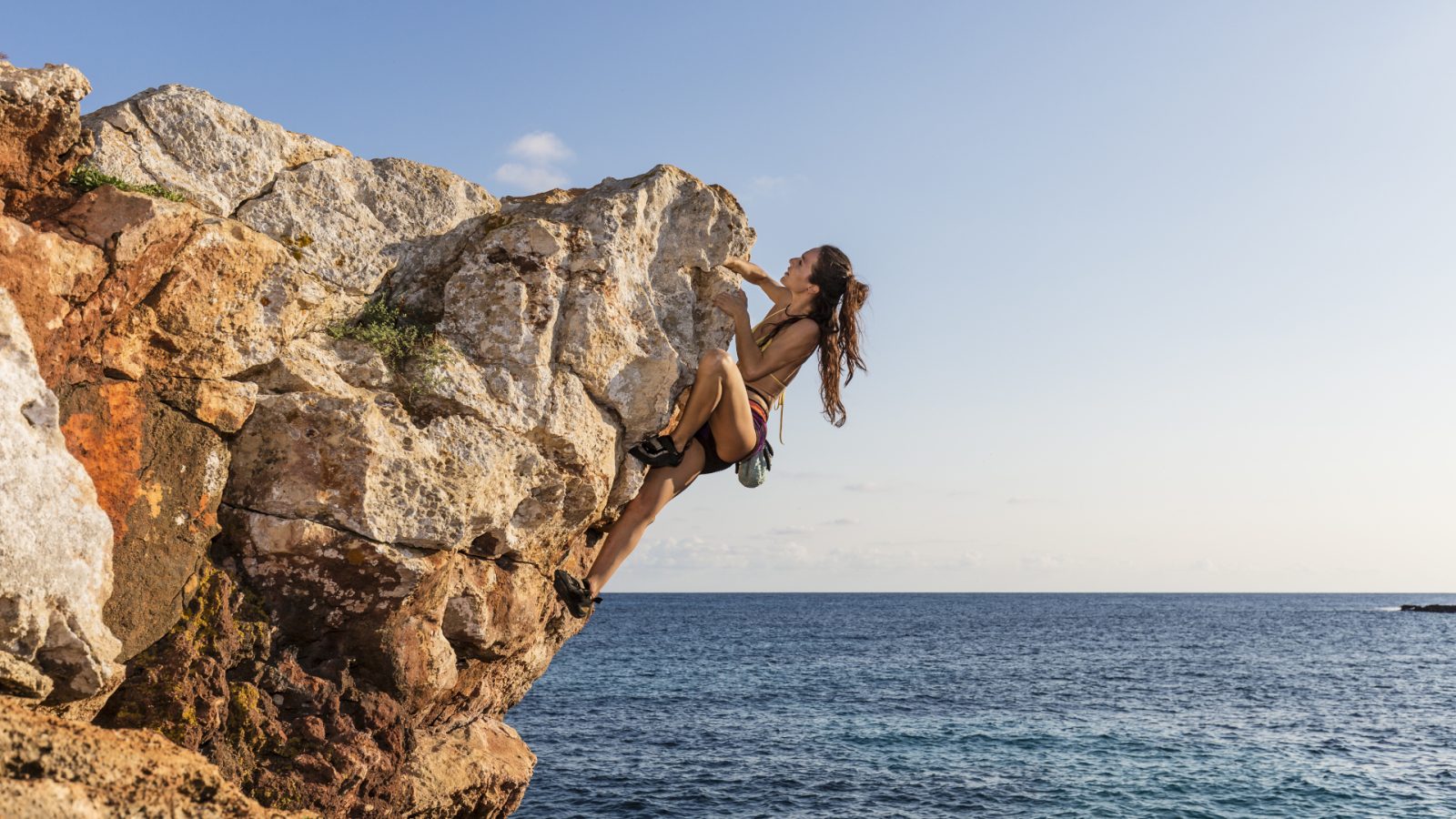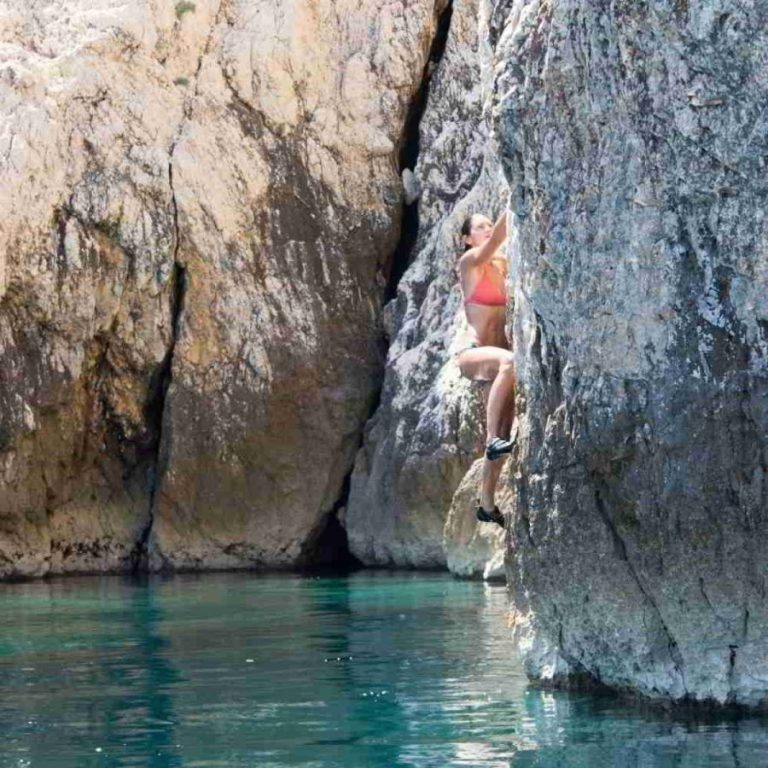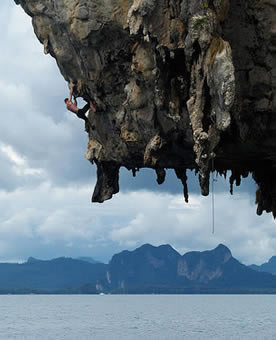Improve Your Deep-Water Soloing Skills
Introduction to Deep-Water Soloing
Deep-water soloing is a type of rock climbing that is performed above water. Instead of using ropes or other safety equipment, climbers rely on the water below to cushion their fall in case they lose their grip or balance. This unique and challenging form of climbing has gained popularity in recent years, attracting adventurous climbers from around the world.
However, it’s important to emphasize the importance of safety when it comes to deep-water soloing. Climbers must be physically and mentally prepared for the challenges of this sport, as well as equipped with the right gear and knowledge to minimize the risk of injury.
Understanding Deep-Water Soloing Techniques
In order to improve your deep-water soloing skills, it’s important to first understand the techniques involved in this type of climbing. Some of the key techniques to focus on include:
- Balance: Maintaining your balance is critical when deep-water soloing. Practicing yoga or other balance-focused exercises can help improve your stability on the wall.
- Body positioning: Proper body positioning can help you conserve energy and reduce the risk of injury. Focus on keeping your center of gravity directly over your feet and using your legs to push against the wall, rather than relying on your arms to pull you up.
- Grip strength: Strong grip strength is essential for deep-water soloing. Incorporate exercises such as pull-ups and hangboard training into your routine to build up your grip strength
- Footwork: Good footwork is key to successful deep-water soloing. Focus on using your feet to find and maintain secure footholds, and keep your weight centered over your feet as much as possible.
Mental Preparation for Deep-Water Soloing
In addition to physical preparation, it’s important to also mentally prepare yourself for deep-water soloing. This includes:
- Overcoming fear of heights: Fear of heights can be a major obstacle for many climbers, but it’s important to face and overcome this fear in order to improve your deep-water soloing skills. Consider seeking professional help or participating in exposure therapy to overcome your fear.
- Staying focused: Deep-water soloing requires a high level of focus and concentration. Practice visualization techniques and mindfulness meditation to help you stay focused while climbing.
- Staying calm under pressure: It’s easy to panic or lose your cool when deep-water soloing, but staying calm and composed can be the difference between success and failure. Practice deep breathing and relaxation techniques to help you stay calm and focused under pressure.
Physical Preparation for Deep-Water Soloing
In order to be physically prepared for deep-water soloing, it’s important to build strength and endurance, improve flexibility and agility, and avoid injury. Some tips for physical preparation include:
- Building strength and endurance: Incorporate weightlifting, cardio, and other strength-building exercises into your routine to build up the strength and endurance you’ll need for deep-water soloing.
- Improving flexibility and agility: Stretching, yoga, and other flexibility-focused exercises can help you improve your agility and mobility on the wall.
- Avoiding injury: Take steps to prevent injury, such as warming up properly before climbing, using proper form, and avoiding overtraining.
Choosing the Right Equipment for Deep-Water Soloing
In order to be fully prepared for deep-water soloing, you’ll need to have the right equipment. Some essential items to consider include:
- Climbing shoes: Look for climbing shoes with a sticky rubber sole and good support for your feet.
- Chalk and chalk bag: Chalk helps to keep your hands dry and improve your grip on the wall. Make sure to choose a high-quality chalk and a convenient chalk bag that’s easy to access while climbing.
- Climbing harness: A climbing harness provides a secure attachment point for a personal flotation device and can help keep you safe while deep-water soloing.
- Personal flotation device: A personal flotation device is an essential piece of safety equipment that can help keep you afloat in the event of a fall.
Finding the Right Location for Deep-Water Soloing
In order to get the most out of your deep-water soloing experience, it’s important to choose the right location. Consider factors such as accessibility, water depth, water temperature, and environmental conditions when selecting a location for deep-water soloing.
Developing a Deep-Water Soloing Training Plan
In order to continue improving your deep-water soloing skills, it’s important to develop a comprehensive training plan. This can include setting achievable goals, incorporating variety into your routine, and gradually increasing the difficulty of your climbs.
Practicing Deep-Water Soloing with a Partner or Coach
Practicing deep-water soloing with a partner or coach can be a great way to receive feedback, improve technique, and build confidence. Consider finding a climbing partner or coach who can provide support and guidance as you work on your deep-water soloing skills.
Staying Safe while Deep-Water Soloing
Safety should always be a top priority when it comes to deep-water soloing. Take steps to stay safe by checking the weather and water conditions, understanding the risks involved, and knowing your limits. Make sure to always use proper safety equipment and seek help if you’re ever in over your head.
Overcoming Common Challenges in Deep-Water Soloing
As you work on improving your deep-water soloing skills, you may encounter various challenges along the way. Some common challenges include improving grip strength, overcoming fear of falling, and improving endurance. These challenges can be overcome with practice, perseverance, and the right mindset.
Incorporating Other Activities into Your Deep-Water Soloing Routine
Incorporating other activities into your deep-water soloing routine can help improve your overall climbing performance and keep you motivated. Consider activities such as yoga, swimming, and climbing to help build strength, flexibility, and endurance.
Staying Motivated to Continue Improving Your Deep-Water Soloing Skills
Staying motivated is key to continuing to improve your deep-water soloing skills. Set achievable goals, celebrate your progress, and surround yourself with supportive people who will encourage you to reach your full potential.
Participating in Deep-Water Soloing Competitions and Events
Participating in deep-water soloing competitions and events can be a great way to build confidence, compete against others, and stay motivated. Consider seeking out local competitions and events in your area to get involved in this exciting and challenging sport.
Conclusion
Deep-water soloing is a unique and challenging form of climbing that requires a combination of physical and mental preparation, as well as the right equipment and mindset. With practice, perseverance, and the right approach, anyone can improve their deep-water soloing skills and experience the thrill of climbing above water.
FAQs
- What is deep-water soloing?
- Deep-water soloing is a type of rock climbing that is performed above water, with the water below serving as a cushion in case of a fall.
- Is deep-water soloing safe?
- Deep-water soloing can be safe when proper safety precautions are taken, including using the right equipment, checking weather and water conditions, and knowing your limits.
- How do I improve my deep-water soloing skills?
- Improving your deep-water soloing skills requires a combination of physical and mental preparation, including building strength and endurance, improving flexibility and agility, and overcoming fear and mental barriers.
- What equipment do I need for deep-water soloing?
- Essential equipment for deep-water soloing includes climbing shoes, chalk and chalk bag, a climbing harness, and a personal flotation device.
- Where can I go deep-water soloing?
- Deep-water soloing can be performed at various locations, including coastal cliffs, quarries, and lakes. Consider factors such as accessibility, water depth, water temperature, and environmental conditions when selecting a location for deep-water soloing.


